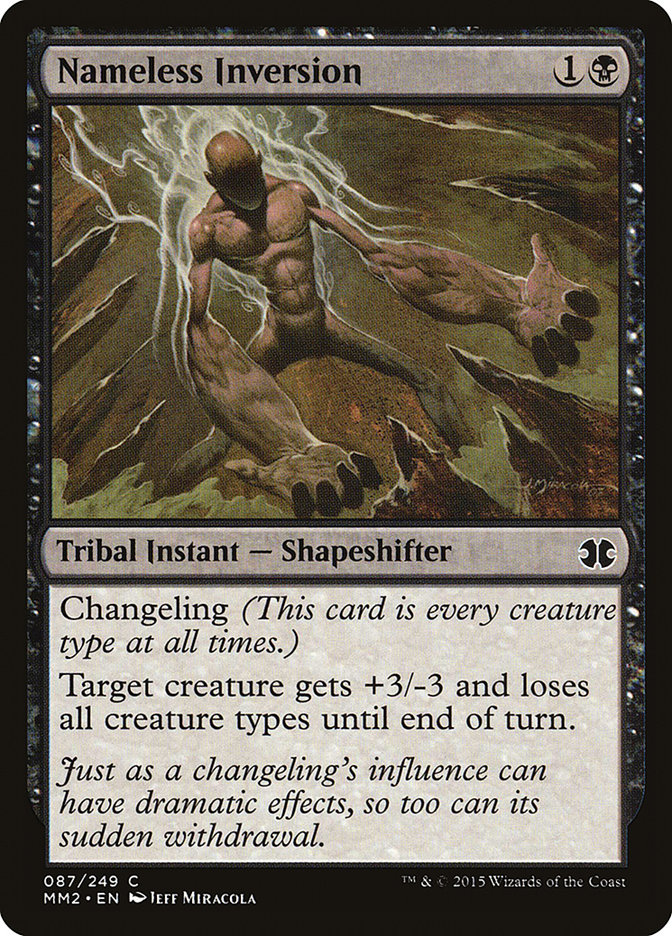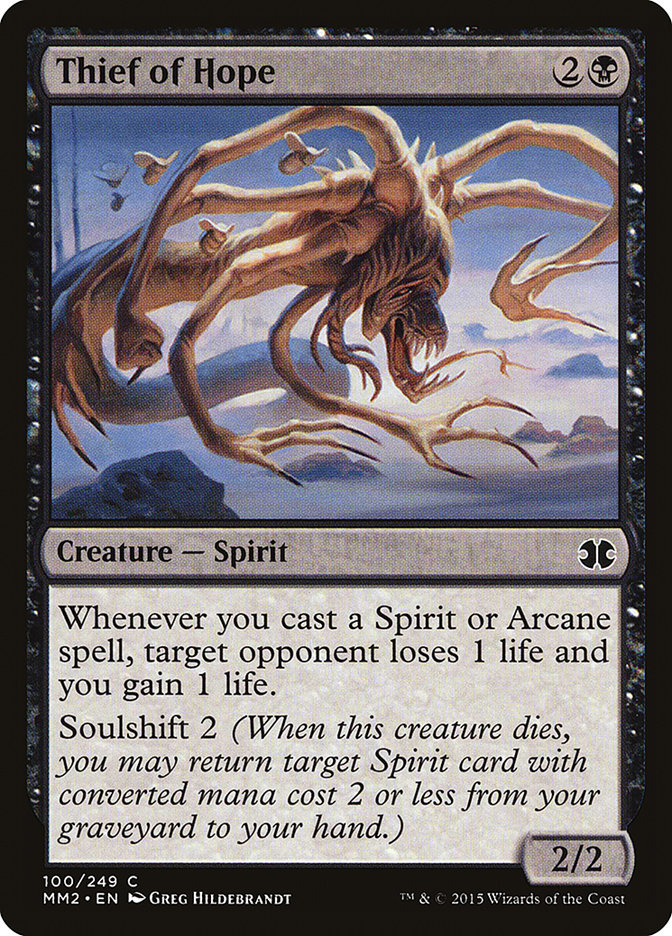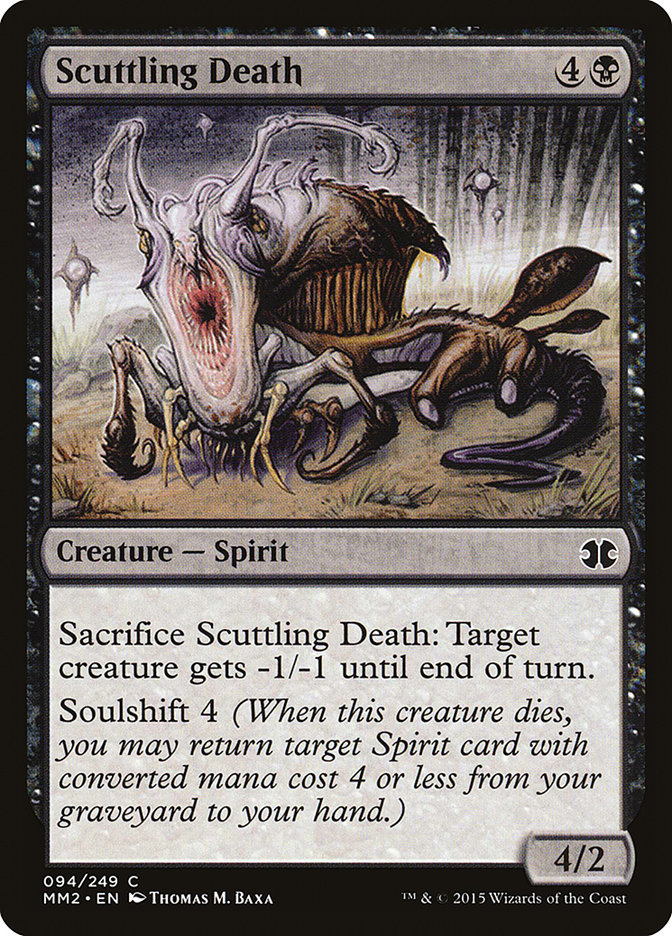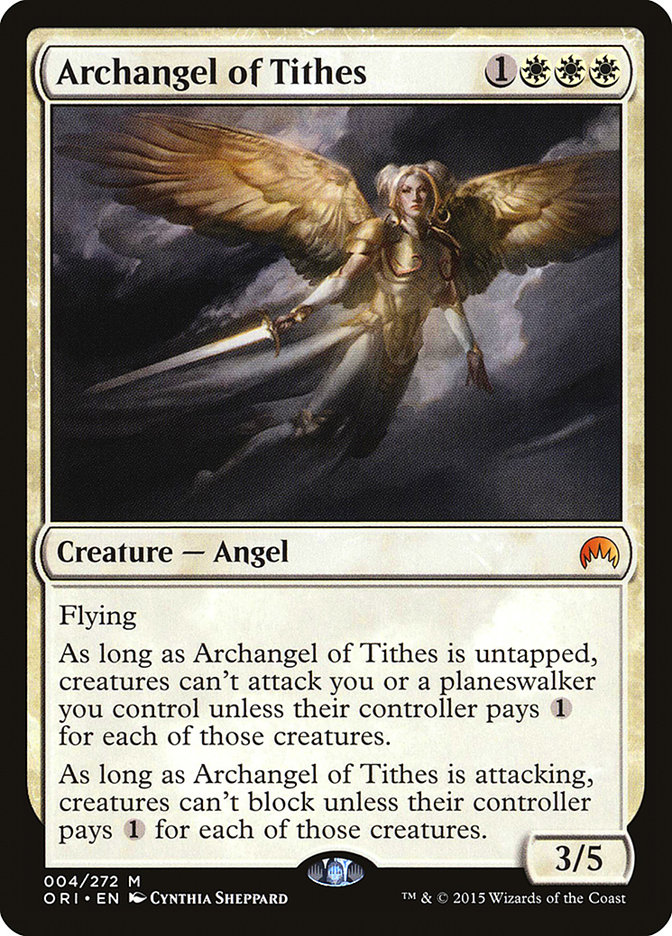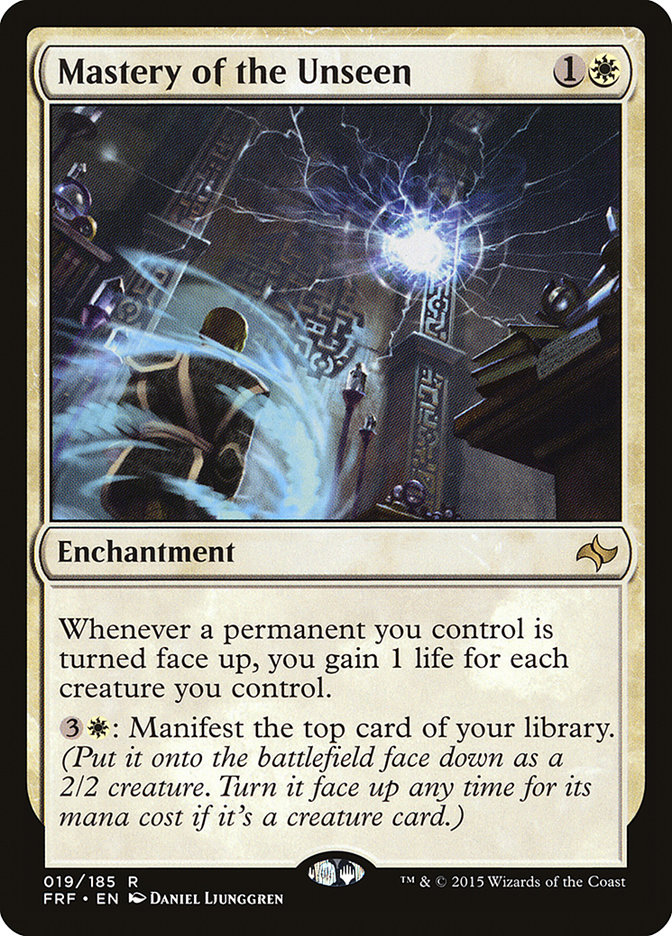I’ve already told you about the beginning of my trip, but now I can talk about the actual tournament. As I mentioned last week, I chose to play Affinity in Modern, and as you’ve likely seen, I played Mono-White Devotion in Standard.
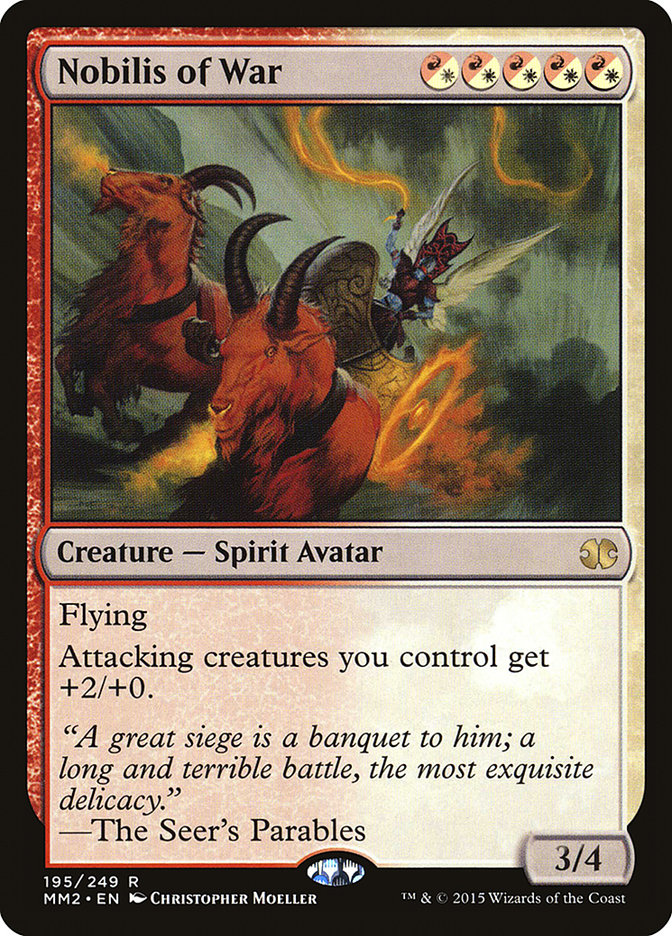 The tournament opened with Modern Masters draft, and I first-picked Lodestone Myr, which I think is a good rare but not a complete bomb or anything. My pack was pretty weak. There were two Ravnica bouncelands and a couple of other cards on that power level that I don’t remember, so I went with the high-upside rare. I was passed Nobilis of War, and the other card I considered was Blinding Souleater. I think W/R Double Strike is a respectable deck that can be underdrafted, and getting passed one of the best rares for it is a sign that I’d probably be cooperating with the player passing to me. On the other hand, it’s a pretty serious commitment, as I can’t play it if I end up playing any other colors. Blinding Souleater is great and extremely flexible, but it’s much less powerful at its best. I decided to take the Nobilis because I could just prioritize white cards and artifacts, especially equipment, and draft toward both rares and then figure out later whether I was W/U Affinity or W/R Double Strike. So while there was a good chance only one of my rares would be great, they at least didn’t pull me in opposite directions, so I could straddle the two and still choose my archetype as late as possible.
The tournament opened with Modern Masters draft, and I first-picked Lodestone Myr, which I think is a good rare but not a complete bomb or anything. My pack was pretty weak. There were two Ravnica bouncelands and a couple of other cards on that power level that I don’t remember, so I went with the high-upside rare. I was passed Nobilis of War, and the other card I considered was Blinding Souleater. I think W/R Double Strike is a respectable deck that can be underdrafted, and getting passed one of the best rares for it is a sign that I’d probably be cooperating with the player passing to me. On the other hand, it’s a pretty serious commitment, as I can’t play it if I end up playing any other colors. Blinding Souleater is great and extremely flexible, but it’s much less powerful at its best. I decided to take the Nobilis because I could just prioritize white cards and artifacts, especially equipment, and draft toward both rares and then figure out later whether I was W/U Affinity or W/R Double Strike. So while there was a good chance only one of my rares would be great, they at least didn’t pull me in opposite directions, so I could straddle the two and still choose my archetype as late as possible.
Over the course of the draft I ended up making a few concessions to staying open compared to committing immediately to W/R, where I ended up, but I generally think I like being flexible in this format and that’s just an expected cost. Unfortunately, I lost to literally the best Spirits and best B/R Bloodthirst decks I’ve ever seen. I’ve done a lot of Modern Masters drafts, and I just don’t think I could plan to beat either of those decks, but I think they both lost to an outstanding G/W Tokens deck with two Overwhelming Stampedes. Overall, I think I did what I could in my seat and I’m happy with how I drafted, but things happened to break in such a way that the decks at the table overall were way above average, and mine wasn’t.
In my first match against Kentaro Yamamoto, I felt way ahead early in the first game, but then he played Cranial Plating and equipped it to his Sunspear Shikari; I didn’t have a removal spell for either card, so I died. Fortunately, I had one copy each of Terashi’s Grasp and Smash to Smithereens that I’d drafted largely so that other people wouldn’t have them against me and I was able to kill his Cranial Plating in game two… and in game three he had a slow draw and I was able to Terashi’s Grasp a Myr Enforcer that he tapped out for on turn five.
Martin Dang had three Vampire Lacerators, three Goblin Fireslingers, and seven Bloodthirst creatures, two of which were Stormblood Berserkers. His deck’s only real weakness was that his only removal spells were a Burst Lightning and a Nameless Inversion. In game one, my opening hand contained three lands, a Copper Carapace, a Sunspear Shikari, and a Mutagenic Growth, so I didn’t think I could possibly lose. He also happened to mulligan into a hand without pressure, so it wasn’t much of a game. Having his decklist, I knew his deck would be hard to beat without Sunspear Shikari since his creatures really outclassed mine as attackers, but I did have two of them, so I had a chance – especially being up a game. In game two, I had Sunspear Shikari and Copper Carapace again, but I didn’t have the Mutagenic Growth (which I did need to use to save my Shikari in the first game). Since he only had two removal spells in his deck, I led with Copper Carapace into the Sunspear Shikari when I also had a Viashino Slaughtermaster in my hand, and he had the removal spell again, and I ended up losing to his superior creatures. I wonder if I could have won if I’d led with the less-important but still quite threatening Slaughtermaster to draw out a removal spell.
In the third game I mulliganned to a threat light-hand that had removal and a Glint Hawk Idol, but I just couldn’t close the game before Martin’s larger creatures narrowly won the race.
While I had a plan for what felt like a bad matchup against Martin, I had no idea how I’d beat Paulo. He had four each of Nameless Inversion, Thief of Hope, and Scuttling Death in a solid Spirits deck. I was clearly the aggressor, and I’d need to lean on my evasion. Nobilis of War was my only card that matched up really well, but he could still kill it at reasonable value with Scuttling Death + Nameless Inversion.
In the first game he tapped out for Scuttling Death and I saw my window. I animated a Glint Hawk Idol and cast Mighty Leap on my Cathodion, attacked with both, and cast Blades of Velis Vel to hit him for eleven. Unfortunately, I’d looked at my life total instead of his, and while I was at ten, he was at thirteen… so he went to two and attacked back to kill me. That was embarrassing. I think that was the last turn he’d be tapped out and I wouldn’t have had a chance to win after that, but putting yourself tapped out and dead on board without having any chance of killing your opponent is pretty indefensible.
Playing Affinity in Modern was really something else. I haven’t played the deck much, and while a day of playing with Paul watching me was incredibly helpful, Affinity is likely the hardest deck in Modern to play, and I didn’t feel at all confident in my plays. Still, it’s a forgiving deck so you can win even if you don’t play perfectly, and just because I didn’t know my plays were definitely right doesn’t actually mean they were wrong.
For the first match of each Constructed format we didn’t know what our opponents were playing, but we got decklists after that. Against EFro I kept a slow hand with two Steel Overseers, and it turned out he was playing W/B Tokens so Steel Overseer is probably my best card. I stuck it again in the second game and won very easily. I think it’s a matchup he claimed was good for him, but I’m skeptical since he didn’t have any Stony Silences and I’ve heard later that Affinity seems favored against that list specifically.
My next match was against Alex Hayne in the mirror. Again I was very good at drawing Steel Overseer, and again it seemed great. In one game, he had two Arcbound Ravagers and an Inkmoth Nexus. He put a Cranial Plating on an Ornithopter and attacked with that and the Inkmoth Nexus. I counted several times and thought he could only get the Inkmoth Nexus to nine power, so I didn’t block. He sacrificed one Arcbound Ravager to the other, generating an additional +1/+1 counter that I’d forgotten about, and killed me. That was pretty embarrassing, especially since it was the second time in five rounds that I’d left myself tapped out and dead on board unnecessarily. Luckily, my overwhelming Steel Overseers won the other two games.
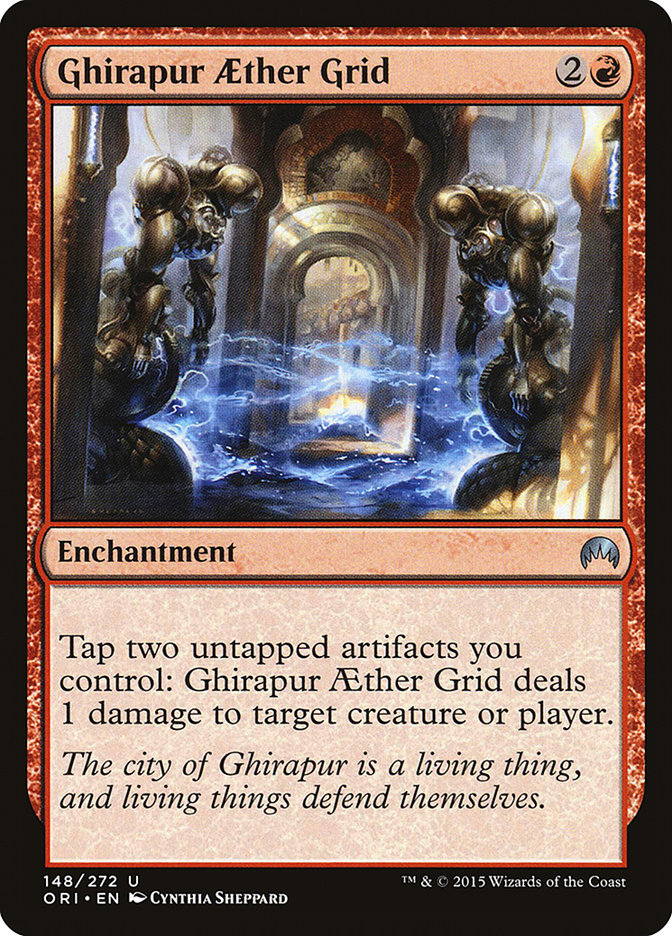 My third round was a long feature match against Thiago Saporito, and I felt like a huge favorite after winning the first game because he didn’t really have any dedicated sideboard plans, just Lingering Souls and versatile removal spells like Abrupt Decay. That was good enough to beat me pretty handily in the second game, but in the third game I had a great draw with Ghirapur Aether Grid and his hand was perfectly set up to lose to it with Noble Hierarch and multiple Lingering Souls. Unfortunately, he also had Pithing Needle. Late into the game, I drew a Galvanic Blast that could have killed his Scavenging Ooze, but I could also almost kill him with it in conjunction with my Etched Champion so I decided to hold on. There was one turn where I could get him to one, but I never found a window to kill him, and the Scavenging Ooze ended up taking over the game – especially after he draw Engineered Explosives to kill my Etched Champion.
My third round was a long feature match against Thiago Saporito, and I felt like a huge favorite after winning the first game because he didn’t really have any dedicated sideboard plans, just Lingering Souls and versatile removal spells like Abrupt Decay. That was good enough to beat me pretty handily in the second game, but in the third game I had a great draw with Ghirapur Aether Grid and his hand was perfectly set up to lose to it with Noble Hierarch and multiple Lingering Souls. Unfortunately, he also had Pithing Needle. Late into the game, I drew a Galvanic Blast that could have killed his Scavenging Ooze, but I could also almost kill him with it in conjunction with my Etched Champion so I decided to hold on. There was one turn where I could get him to one, but I never found a window to kill him, and the Scavenging Ooze ended up taking over the game – especially after he draw Engineered Explosives to kill my Etched Champion.
My final round was against Jacob Wilson who was 0-3 with Affinity after going 3-0 in Modern Masters draft and probably felt even less comfortable with the deck than I did. I don’t remember exactly how the first game went – I probably won with Steel Overseer – and I don’t remember if we ended up playing two or three games, but I know that in the last game I had a good Ghirapur Aether Grid draw and he didn’t have an answer to it but he did have an Arcbound Ravager that I couldn’t kill. I played the Grid and killed his other creature, leaving him with just the Arcbound Ravager and an Inkmoth Nexus, and I had two untapped artifacts. He attacked with the Arcbound Ravager and the Inkmoth Nexus equipped with Cranial Plating and I took the hit, to nine poison. Then, at the end of his turn, I tried to kill the Inkmoth Nexus. He decided to sacrifice most of his board to his Arcbound Ravager to make the Inkmoth Nexus a 6/6. I had four flying chump blockers on the battlefield and another in hand, so I was confident that I could race the one lethal attacker, and now that the Arcbound Ravager was gone I could just kill all his other creatures and felt solidly in control of the game. Thankfully, this is one I ended up winning.
So I finished the first day at a respectable 4-3. Not a great start, but a solid performance against the World Championships field. My Magic Origins draft the second day started terribly. I first-picked Lightning Javelin over Shambling Ghoul, followed by Suppression Bonds, then Read the Bones in a pack with no good red or white cards. Then I saw several packs in a row with Titan’s Strengths that I didn’t want to take early and no really good cards, and couldn’t find any direction and ended up with a couple playables each in red, white, and black. My only red playables were Lightning Javelin and a Mage-Ring Bully, but in pack two I opened Abbot of Keral Keep and decided to take it then basically just took red cards for the rest of the pack. By the end of the pack I felt like I was reasonably on track for R/W Aggro, but I was very short on creatures so in pack three I took an Iroas’s Champion over a Knightly Valor and another creature over Molten Vortex. I managed to pull together an aggressive deck with a curve and a plan, but it was definitely around average at best.
My first match was against Alex Hayne, and in game one I managed to get him with the combination of Act of Treason and Call of the Full Moon on his renowned Outland Colossus. In the second game I was able to get far enough ahead with Mage-Ring Bully into Abbot of Keral Keep into Grasp of the Hieromancer + Call of the Full Moon to put him down to four, so I could kill him with Volcanic Rambler before he could finish me off.
My next match was against Paul Rietzl’s excellent almost-monoblue deck, and the matchup was terrible for me because he had five bounce spells and some other removal against my enchantment-based deck in addition to the fact that his deck was simply much better than mine. To top it all off, I drew far too many lands.
My match against Steve Rubin was similar in that I was just wildly outclassed and outdrawn, and the games were not at all competitive.
After starting the day with a 1-2 draft coming off an average 4-3 finish in Day One, I thought I was eliminated from the top four and would be battling just for Pro Points from here on even if I somehow won out, which wasn’t something I could expect even if I liked my Standard deck. This isn’t a tournament I ever really expected to win, so that wasn’t a big deal. I just wanted to try to get as many points as I could.
For Standard I was on Mono-White Devotion. Craig had mentioned that it was a deck he was working on in Team UltraPRO’s forums a while ago, but I mostly ignored it. Then, when I saw he was in the Top Eight of the WMCQ, I immediately put the deck together on Magic Online to try it out. I played his deck at Worlds last year and liked it a lot, and I really like playing a lot of basic lands. When I told Craig I was trying it, he added me to another Facebook group where the deck’s creator, Justin Heilig, had been discussing the deck with a group of dedicated players I mostly didn’t know.
They were enthusiastic about the deck and the idea that I might play it at Worlds, and very interested in helping out with tuning and sideboarding the deck further. When I tried it out, it seemed to do very well against the open field on Magic Online but I found it to be a little weak against Abzan Control and U/B Control with Jace, Vryn’s Prodigy and Silumgar, the Drifting Death. My team guessed that Abzan Control would likely be less popular than Abzan Aggro, and I didn’t know how common either of these decks would be and I liked my positioning against the rest of the field, so I went with it.
My list, for reference:
Creatures (25)
- 4 Knight of the White Orchid
- 4 Soldier of the Pantheon
- 3 Brimaz, King of Oreskos
- 4 Wingmate Roc
- 1 Anafenza, Kin-Tree Spirit
- 2 Kytheon, Hero of Akros
- 4 Archangel of Tithes
- 3 Hangarback Walker
Lands (25)
Spells (10)

My first match was against Martin Dang, and while we didn’t have decklists beforehand I wasn’t surprised that he was playing Atarka Red. Archangel of Tithes is incredible against Atarka Red, and it won both games despite his good start with Goblin Rabblemaster on the play in game two.
My second match was against Yuuya Watanabe with Jeskai. The first game was looking pretty good, as he had a couple Mantis Riders but I had a pair of Mastery of the Unseen and thought I could race the fliers. I ended up bricking on hitting a creature for too long and couldn’t gain the life I needed to buy another turn or two to close out the game. I conceded when I shouldn’t have though – I had four mana left and I was dead unless I gained life, and I conceded rather than activating Mastery of the Unseen again because I forgot that I could hit Hangarback Walker, which I could flip for free to gain enough life to likely win the game.
In the second game, when I was on the play, I sided out Hangarback Walker because it didn’t block his fliers well and he had Magma Spray… but for the third game, I sideboarded them in so that I could cut Archangel of Tithes. At four mana, I just didn’t think I’d ever have a chance to cast it because I’d want to play around his four Ojutai’s Commands. With him on the play he’d get four mana before me, so I just wanted to keep my curve as low as possible to try to get under him and win with early pressure, Mastery of the Unseen, or Elsepth, Sun’s Champion. In the second game, Yuuya missed his third land drop despite activating Jace for multiple turns, and in the third game Elspeth, Sun’s Champion was able to come down to answer a Stormbreath Dragon while he was holding Disdainful Stroke.
I played against Paulo with Esper Dragons in the third round, and I had good aggressive starts with Soldier of the Pantheon and a timely Banishing Light for his only Perilous Vault in the second game. He thought he was substantially advantaged in the matchup, but I’m not convinced. I think my deck is bad against a U/B deck with multiple copies each of Jace, Vryn’s Prodigy, Ashiok, Nightmare Weaver, and Silumgar, the Drifting Death… but while he had all of those cards, he only had one each of Ashiok and Silumgar and no Jaces in his maindeck. His removal was a bit clunky, and Dragonlord Ojutai isn’t actually that great against me.
After my match, I tried to figure out whether I had a chance to make the Top Four. Seth hadn’t stopped losing and was taking most of the available points in the event, pushing the bar down for everyone else. It looked like if Seth lost his last round I’d be out no matter what, but if he won it’d come down to tiebreakers between Magnus Lantto and me, where I’d have a 1% head start and he’d be paired down, pulling his breakers down instead of up. Unfortunately, I’d have to play against Owen Turtenwald playing Abzan Control.
I lost the first game in fairly typical fashion, but in games two and three he had to use early Abzan Charms to try to find lands, a play that puts him far enough behind on tempo to give me a good chance regardless. But on top of that, I think he still missed a land drop in each game, and I was able to stay ahead the whole time to win a bad matchup. Seth also won, and after a brief tiebreaker sweat I was in the Top Four.
The Swiss portion of the tournament ended on Friday, but the Top Four wouldn’t be played until Sunday so we had a full day to prepare… and that really hurt me. Seth was playing a deck I already knew how to play against, but I was playing something unfamiliar, so there goes the element of surprise thanks to that extra day. It didn’t help either that Seth’s cards almost all do something useful in the matchup, so I think having the time he’d need in order to try out different sideboard plans and learn the matchup helped him a lot more than it helped me. But in all fairness, even if we’d played the Top Four immediately after the Swiss, I think the matchup is bad enough for me that Seth would still likely have won.
I woke up early the morning before my match and got to the site before any of the other players. Sitting and watching them set the stage, it all felt very familiar. I knew I likely wouldn’t win, but I also knew this wouldn’t be my last chance. My stomach hurt, and I couldn’t tell if I was nervous or hungry, but I think it mostly got better when I ate so while I might have managed to let myself think a little too much about how cool it’d be to be able to say I was the World Champion, I don’t think it really got to me.
You can watch my Top Four match here:
I’m satisfied with how I played it, but my deck is just bad at beating Courser of Kruphix and Nissa, Vastwood Seer and Seth usually had both of them.
After my match, I asked Mike Sigrist if I was supposed to be upset while we were watching Paul and Owen play their match. He said he wasn’t upset about losing the finals of the Pro Tour to Joel Larsson. I wasn’t upset either. I was mostly relieved that I didn’t still have my match looming over me. I knew I wasn’t likely to win, and while I could get a little excited about how awesome winning would be and how close I theoretically was, I still had a long way to go and it was still very unlikely that I’d win, and I’d still put up a great finish.
The support on Twitter and at the event was fantastic, and a lot of people told me they were rooting for me. On the one hand, I want to sincerely apologize for letting each of them down; on the other hand, it was a hard matchup, and I did what I can, and I never promised them I’d win it all. Still, to whom it may concern: thank you very much for your support, and I’m sorry I couldn’t win it all.
As a final aside, I saw a lot of criticism about Jackie Lee as a commentator for Worlds, suggesting that, as she’s done very little commentary, it didn’t make sense to try her out on the biggest stage… that it’s not fair to her or to the viewer. I haven’t gotten to watch much of the coverage yet, but I do know that what the experienced player needs is very different from what the casual observer needs and that there’s a strong argument against catering coverage to the most experienced players. Worlds specifically is the tournament that is most likely to be viewed by people who know the least – I know several of my friends and family who don’t know anything about Magic tuned into the Top Four, for example, and for those people and many others, representation is particularly important while perfect game analysis isn’t very important. I’ve read an argument that having a woman in the booth who isn’t great at commentary can do harm, but I think that’s pretty minimal. Overall, I think giving her more practice first probably would have been good (that’s hard to argue against), but she has a full-time job as a designer, not a member of coverage, so they can’t necessarily just send her off to some GPs to practice. I don’t think WotC is perfect at choosing commentators, but I think it’s worth keeping in mind that there are a lot of competing goals with these productions, and it’s important to focus on being level and respectful in criticism.

